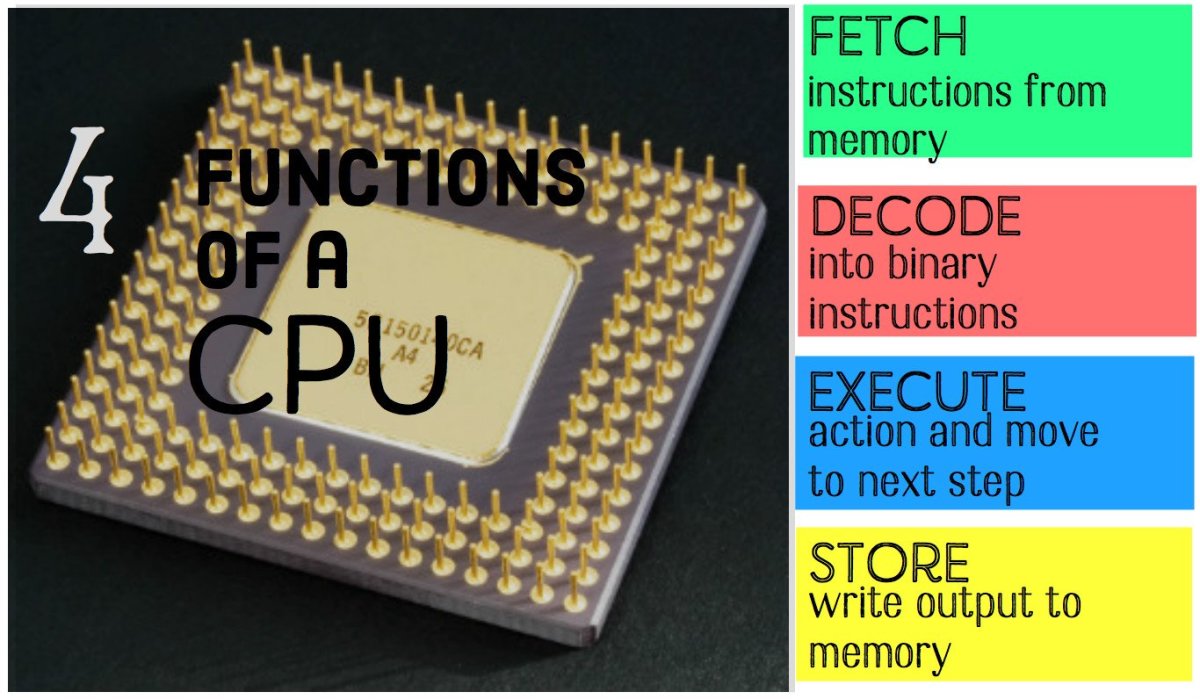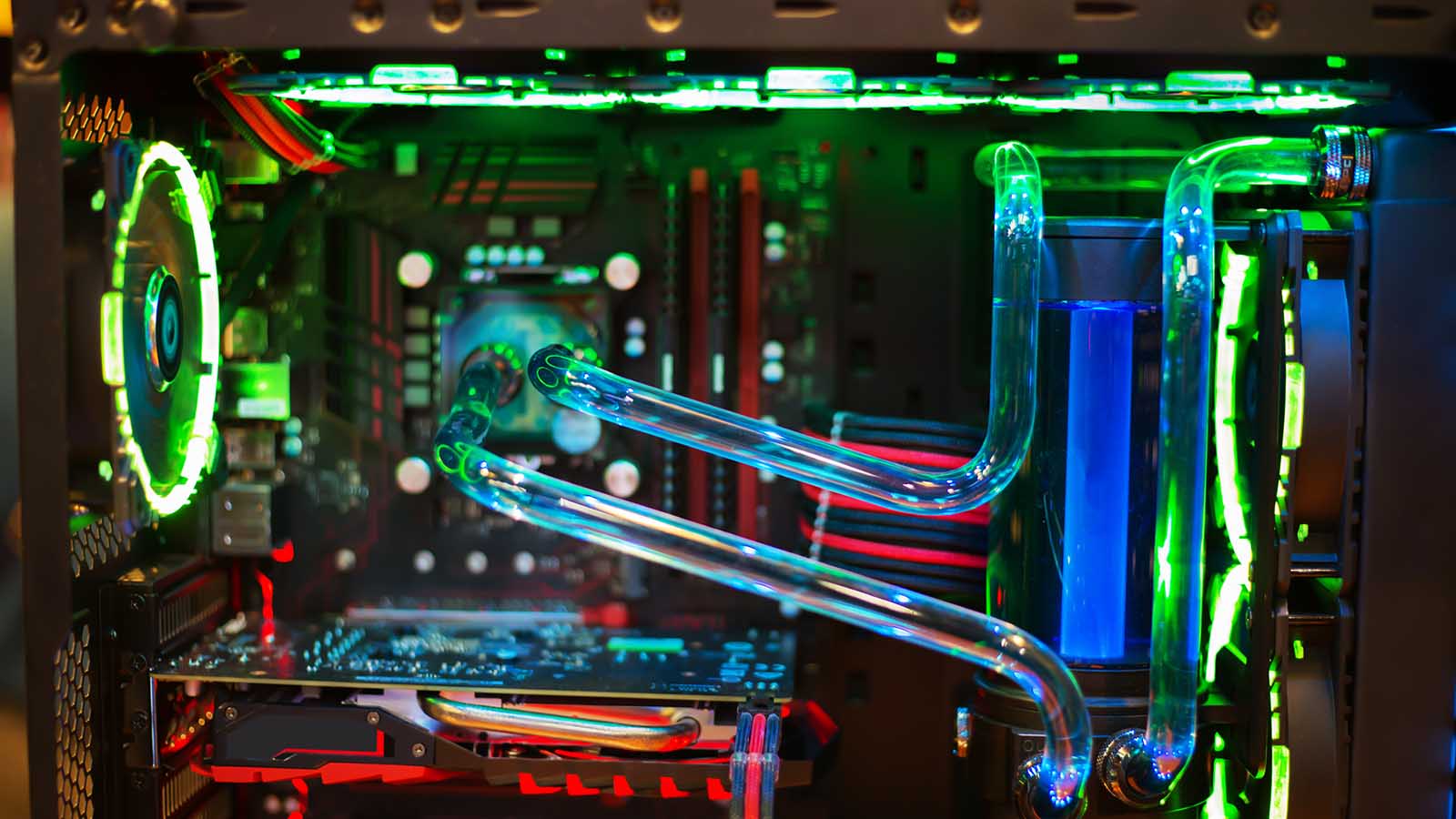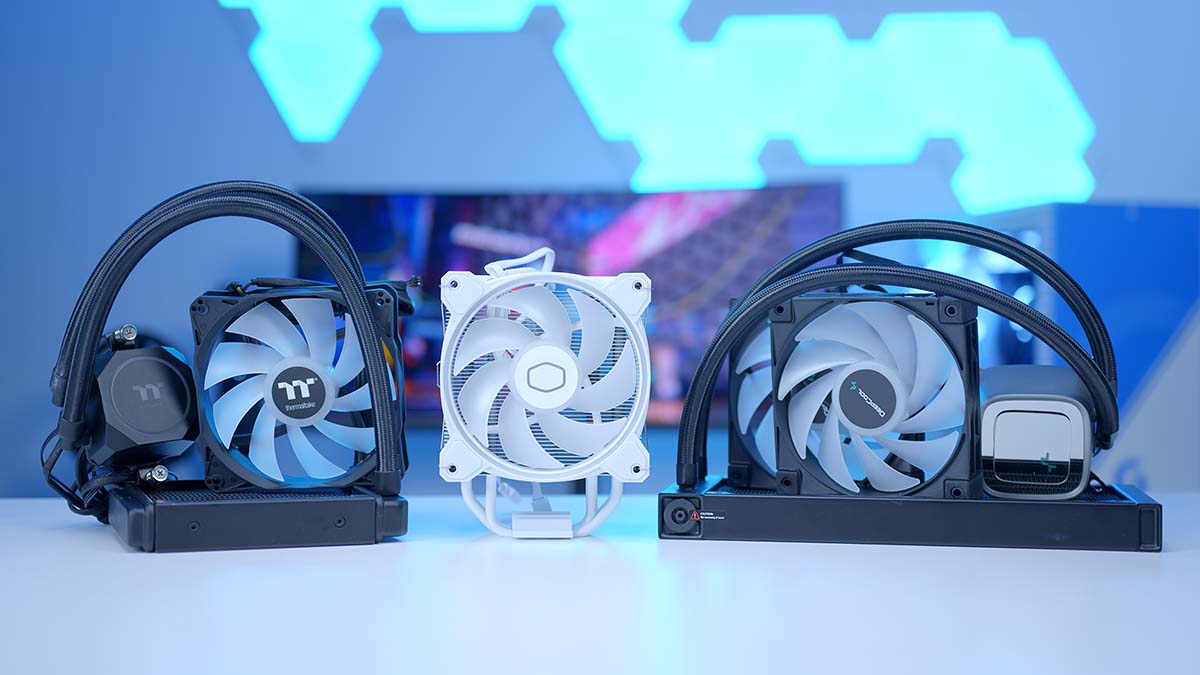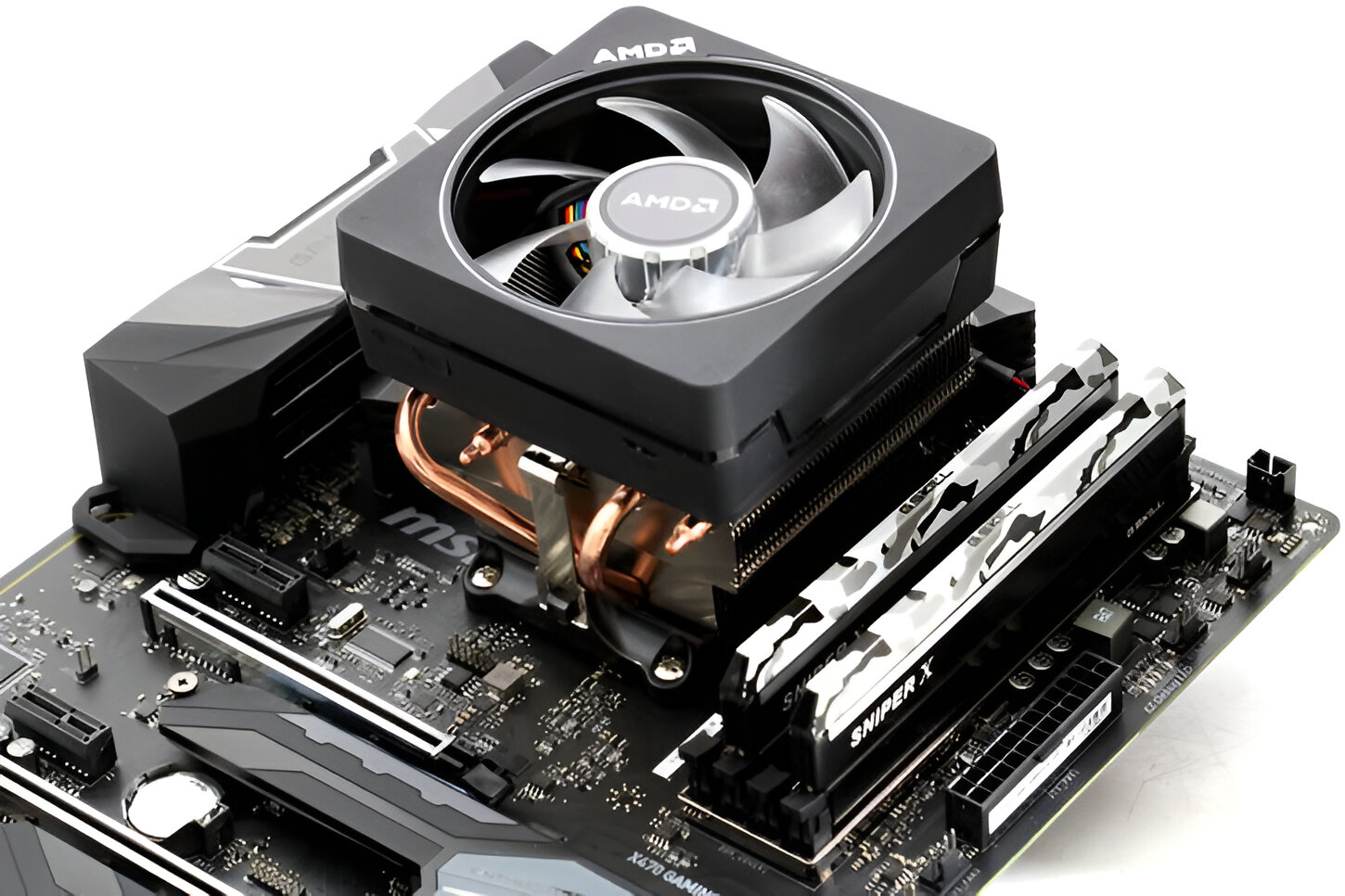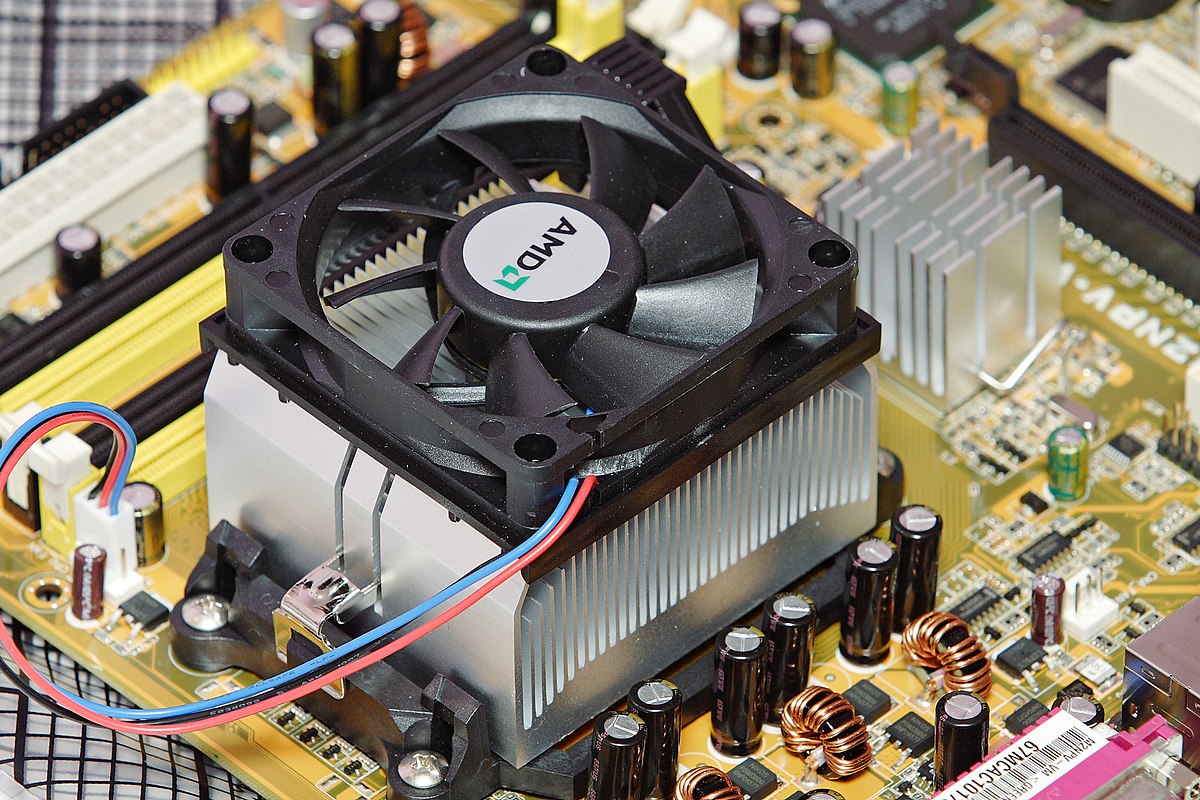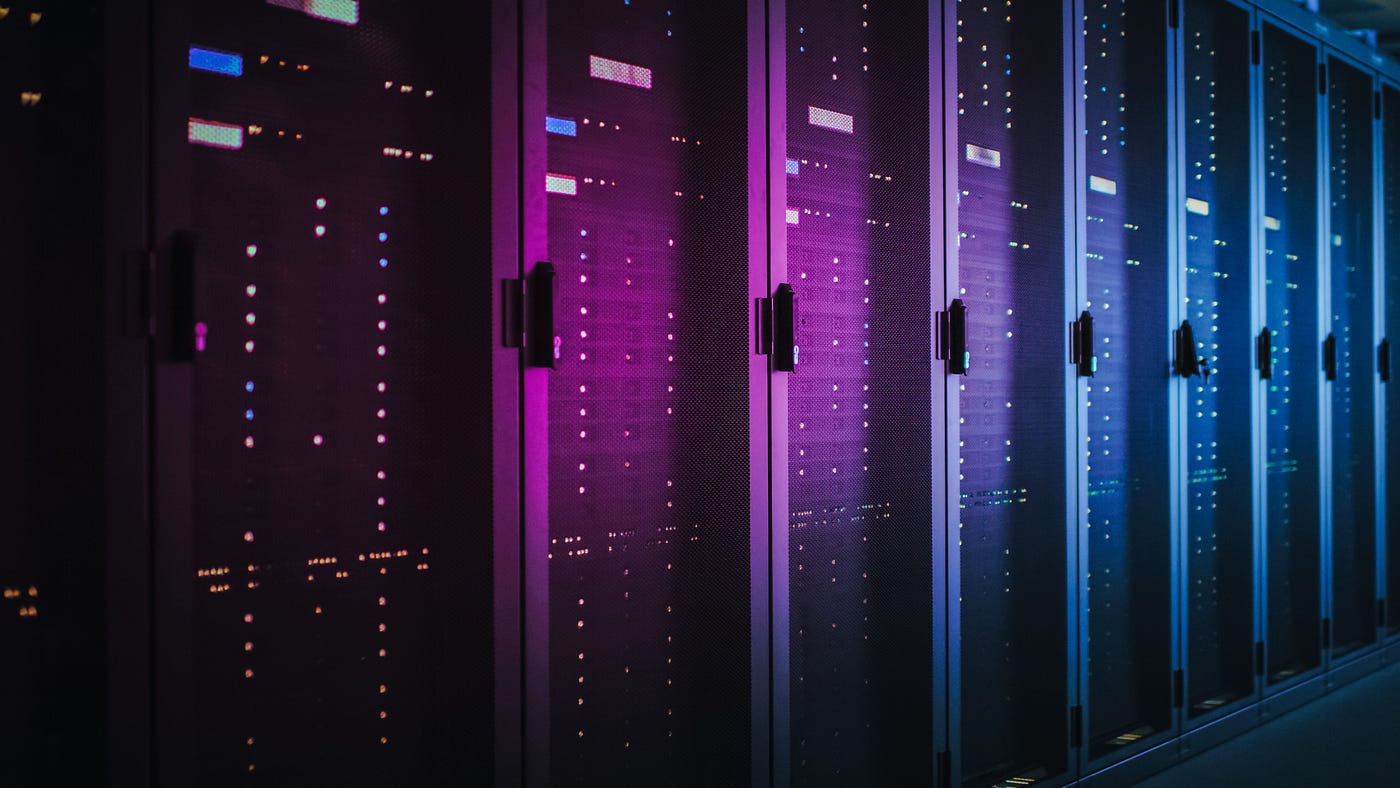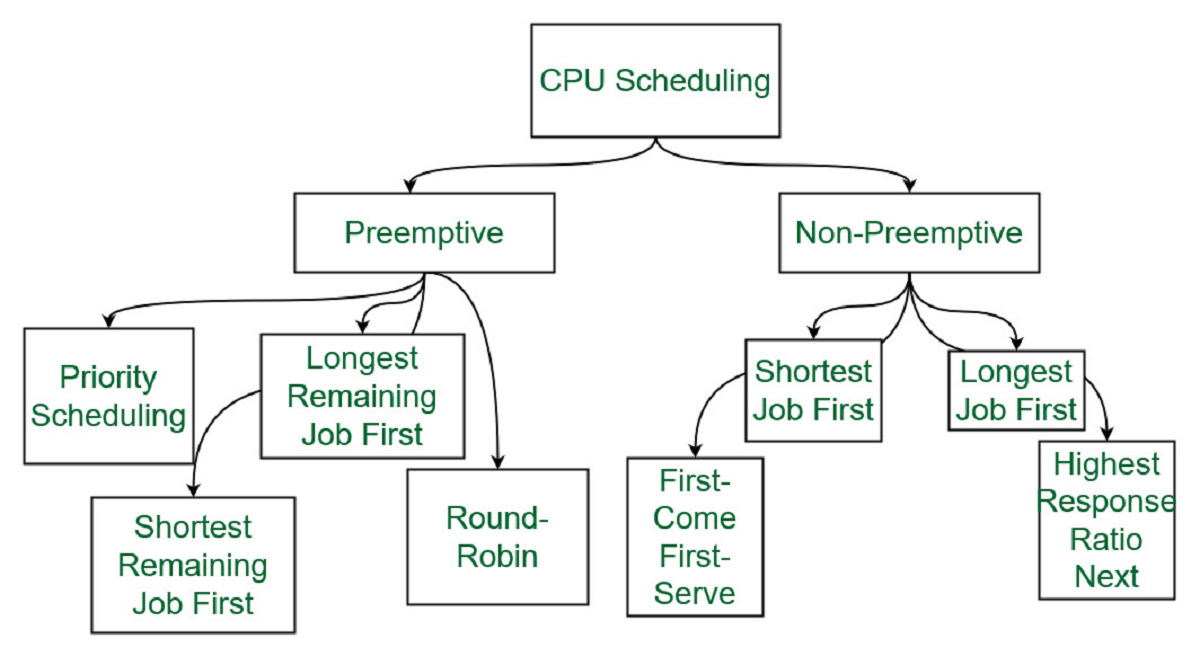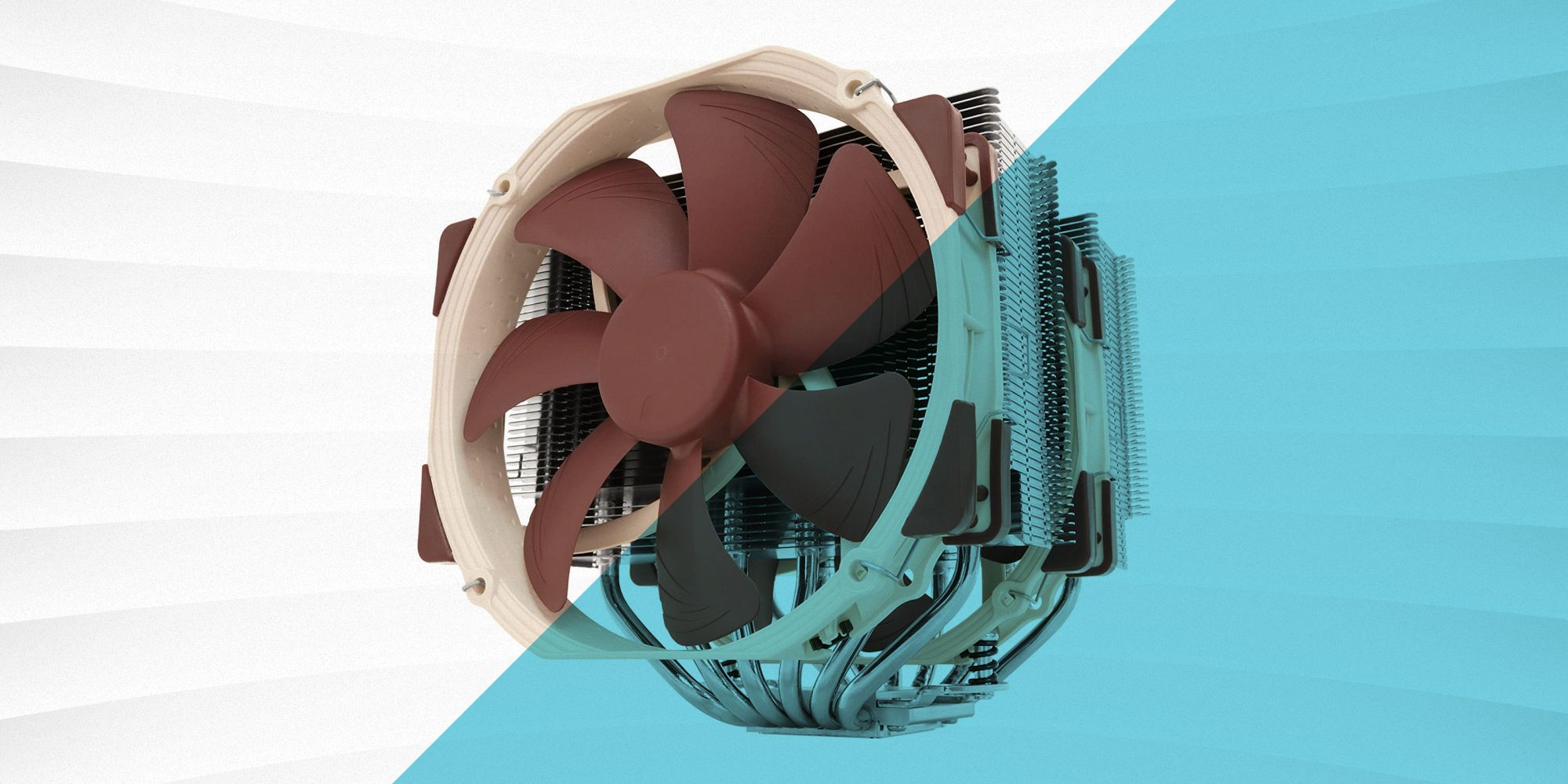Introduction
The central processing unit, commonly known as the CPU, is an essential component of any computer system. It serves as the brain of the computer, carrying out instructions and performing calculations to execute various tasks. The CPU plays a crucial role in the overall performance and speed of a computer, making it an integral part of modern technology.
The CPU is responsible for processing and executing instructions from the computer’s software, including operating systems, applications, and games. It manages and coordinates the flow of data between different hardware components, ensuring that the computer functions properly.
In this article, we will explore the job of the CPU in more detail. We will discuss how a CPU works, its components, and the factors that affect its performance. Additionally, we will delve into the importance of CPU cooling and highlight recent advancements in CPU technology.
Understanding the functions and capabilities of the CPU is essential for anyone seeking to gain a deeper understanding of computer systems. So, let’s dive in and explore the intricate workings of the CPU.
Definition of CPU
The CPU, or central processing unit, is the primary component of a computer system that carries out instructions and performs calculations. It is often referred to as the “brain” of the computer, as it controls and coordinates the activities of all the other hardware and software components.
At its core, the CPU is a microprocessor that consists of millions, or even billions, of transistors that act as electronic switches. These transistors are organized into circuits and logic gates that allow the CPU to process and execute instructions. The CPU receives input from the computer’s memory, performs calculations, and produces output that is sent back to the memory or other devices.
The CPU is responsible for executing a wide range of tasks, including arithmetic operations (such as addition, subtraction, multiplication, and division), logical operations (such as comparisons and decision-making), and data manipulation. It also oversees the control of other hardware components, such as the input and output devices, storage devices, and the memory.
In a modern computer system, the CPU is typically a highly integrated chip that is mounted on the motherboard. It may consist of multiple cores, allowing for simultaneous processing of multiple instructions. Each core can handle its own set of tasks, resulting in improved multitasking capabilities and overall system performance.
The speed at which the CPU can execute instructions is measured in clock cycles per second, commonly referred to as the clock speed. This is often expressed in gigahertz (GHz) or megahertz (MHz). The faster the clock speed, the more instructions the CPU can process in a given amount of time.
Overall, the CPU is an essential component of any computer system, and its efficient operation is crucial for the smooth running of tasks and applications. Its performance and capabilities have significantly evolved over the years, enabling advancements in technology and pushing the boundaries of computing power.
How Does a CPU Work?
Understanding the functioning of a CPU is key to grasping the overall operations of a computer system. The CPU follows a systematic process to execute instructions and perform tasks.
When a computer program, such as a software application or an operating system, is launched, the CPU receives the instructions from the computer’s memory. It begins by retrieving the first instruction from the memory and decoding it into a format that it can understand.
Once decoded, the CPU determines the type of operation that needs to be performed, whether it is an arithmetic calculation, data transfer, or control command. It then executes the instruction accordingly.
The CPU consists of two main components: the control unit (CU) and the arithmetic and logic unit (ALU). The control unit manages the flow of data and instructions within the CPU and coordinates the activities between the different components. It ensures that the instructions are executed in the correct order and that the correct data is used for each operation.
Meanwhile, the ALU handles the arithmetic and logical operations. It performs mathematical calculations, such as addition and multiplication, as well as logical operations, such as comparisons and conditional statements. The ALU carries out these operations by manipulating the binary data stored in the CPU’s registers.
In addition to the control unit and the ALU, the CPU also includes other components that aid in its operation. This includes the cache memory, which stores frequently accessed data to speed up processing, and the register file, which holds temporary data that is being processed by the CPU.
The CPU operates at a specific clock speed, determined by the frequency of the crystal oscillator on the motherboard. The clock speed governs the rate at which the CPU can execute instructions. A higher clock speed allows for faster processing, resulting in improved system performance.
It is important to note that modern CPUs often have multiple cores, which act as individual processors within a single chip. This allows for parallel processing, where multiple instructions can be executed simultaneously. This greatly enhances the overall speed and performance of the CPU.
In summary, a CPU follows a systematic process to execute instructions, involving the control unit, the arithmetic and logic unit, and various other components. Its efficient operation relies on the coordination of these components and the clock speed at which it operates. Understanding how a CPU works provides insight into the inner workings of a computer system and its ability to perform tasks and processes.
Components of a CPU
The CPU, or central processing unit, is composed of several essential components that work together to carry out instructions and perform calculations. Each component plays a crucial role in the overall functionality and performance of the CPU. Let’s explore these components in detail:
1. Control Unit (CU): The control unit acts as the brain of the CPU, managing and coordinating the execution of instructions. It retrieves instructions from the memory and decodes them, determining the tasks to be performed. It also controls the flow of data between different components of the CPU.
2. Arithmetic and Logic Unit (ALU): The ALU is responsible for carrying out arithmetic operations, such as addition, subtraction, multiplication, and division. Additionally, it performs logical operations, such as comparisons and decision-making. The ALU manipulates binary data stored in registers to perform these operations.
3. Cache Memory: Cache memory is a high-speed memory located inside the CPU. It stores frequently accessed data and instructions to reduce the time needed to retrieve them from the main memory. The cache memory improves CPU performance by providing faster access to data and instructions.
4. Register File: The register file is a small, high-speed memory that holds temporary data being processed by the CPU. It contains a set of registers that can store binary data, addresses, or control information. The register file allows for quick access and manipulation of data during instruction execution.
5. Clock Speed: The clock speed of a CPU refers to the rate at which it can execute instructions. It is measured in gigahertz (GHz) or megahertz (MHz). A higher clock speed means the CPU can process instructions faster. However, in recent years, CPU manufacturers have focused more on improving efficiency and multi-core processing rather than solely increasing clock speed.
6. Instruction Set Architecture (ISA): The ISA defines the set of instructions that a CPU can execute. It includes the types of data operations, memory access, and control flow instructions that the CPU can understand and execute. Different CPUs may have different instruction sets, which can impact compatibility and performance.
These components work together seamlessly to enable the CPU to function effectively. The control unit manages the flow of instructions, the ALU performs calculations, the cache memory speeds up data access, and the register file stores temporary data. The clock speed determines the overall processing speed, while the instruction set architecture defines the capabilities of the CPU.
Understanding the components of a CPU helps in appreciating the complexity involved in executing instructions and performing calculations. Each component contributes to the overall performance and efficiency of the CPU, making it a critical part of any computer system.
Control Unit
The control unit (CU) is a vital component of the CPU that plays a crucial role in executing instructions and managing the flow of data within the computer system. It acts as the brain of the CPU, coordinating the activities of the other components to ensure proper execution of instructions.
The control unit performs several key functions to facilitate the execution of instructions. Firstly, it fetches instructions from the computer’s memory, one at a time, and stores them in a special area called the instruction register. It then decodes the instructions, determining the type of operation to be performed.
Once the instruction is decoded, the control unit directs the necessary data from the memory or registers to the appropriate part of the CPU for processing. It ensures that the instructions are executed in the correct order, managing the sequential flow of data and maintaining the integrity of the results.
In addition to managing the flow of data, the control unit also oversees the control signals that synchronize the operations of various components within the CPU and the computer system as a whole. It generates control signals that regulate the timing and sequencing of operations, ensuring that they are executed at the right time and in the correct sequence.
The control unit is responsible for coordinating the interaction between the CPU and other hardware components, such as input and output devices, storage devices, and the computer’s memory. It manages the transfer of data and instructions between the CPU and these external devices, allowing for effective communication and data processing.
Furthermore, the control unit plays an essential role in handling exceptional situations or errors that may occur during the execution of instructions. It detects and responds to these exceptions, such as division by zero or attempting to access invalid memory locations, by initiating appropriate error-handling procedures.
Overall, the control unit is a crucial component within the CPU that ensures the proper execution of instructions and the coordination of data flow. It fetches and decodes instructions, manages the flow of data, generates control signals, coordinates with other hardware components, and handles exceptions. Without the control unit, the CPU would not be able to carry out its tasks effectively, making it an indispensable part of any computer system.
Arithmetic and Logic Unit
The Arithmetic and Logic Unit (ALU) is a crucial component of the CPU responsible for performing arithmetic operations, logical operations, and data manipulations. It is often referred to as the “heart” of the CPU, as it carries out the calculations and decision-making processes necessary for various tasks.
The ALU performs a wide range of arithmetic operations, including addition, subtraction, multiplication, and division. It operates on binary data, manipulating the bits to produce the desired results. For example, if the CPU needs to add two numbers, the ALU retrieves the operands from the registers, performs the addition operation, and stores the result in the appropriate register.
In addition to arithmetic operations, the ALU also handles logical operations. These operations involve comparing data, making decisions based on conditions, and manipulating Boolean logic. For instance, the ALU can perform logical AND, OR, and NOT operations, as well as comparisons such as greater than, less than, and equal to. These operations are essential for tasks such as data validation, decision-making, and control flow within a computer program.
The ALU manipulates binary data using logic gates and circuits. These circuits are composed of transistors that act as electronic switches, allowing the ALU to perform calculations and logical operations. By combining and manipulating the states of these switches, the ALU carries out the desired operations.
To ensure efficient operation, the ALU contains multiple registers that hold temporary data being processed. These registers provide fast access to data within the CPU, reducing the time needed to retrieve and store information during instruction execution. The ALU can retrieve data from these registers, perform calculations or logical operations, and store the results back in the registers.
In modern computer systems, the ALU may include specialized units called Floating-Point Units (FPUs) for handling complex mathematical calculations involving decimal numbers. FPUs are specifically designed to perform floating-point operations, such as addition, subtraction, multiplication, and division. They are commonly used in applications that require high precision, such as scientific simulations, graphics rendering, and financial calculations.
Overall, the Arithmetic and Logic Unit is a critical component of the CPU that performs arithmetic operations, logical operations, and data manipulations. It plays a vital role in executing instructions and carrying out calculations required for various tasks. The efficient operation of the ALU is crucial for the overall performance and capabilities of the CPU.
Cache Memory
Cache memory is a small, high-speed memory component located within the CPU. It serves as a temporary storage area for frequently accessed data and instructions, allowing for faster access and retrieval.
The primary function of cache memory is to reduce the time it takes for the CPU to access data from the main memory, which is slower in comparison. By storing frequently used data in the cache, the CPU can quickly retrieve it without having to access the slower main memory.
Cache memory operates on the principle of locality, which refers to the tendency of a CPU to access data that is spatially or temporally close together. There are two types of locality:
1. Temporal Locality: This refers to the tendency of the CPU to access the same data or instructions multiple times within a short period. By storing this data in the cache, subsequent accesses to the same data can be quickly retrieved from the cache rather than having to retrieve it from the main memory again.
2. Spatial Locality: This refers to the tendency of the CPU to access data that is physically close together in memory. When the CPU accesses a specific address in the memory, it is likely that it will also access nearby addresses. By storing a block of data in the cache, the CPU can take advantage of spatial locality and retrieve multiple adjacent data items in a single cache access.
Cache memory is organized in a hierarchy of levels, with each level providing a different size and speed. The first level cache, L1 cache, is the closest to the CPU and has the fastest access time. It is often divided into separate caches for data (L1D) and instructions (L1I). The second level cache, L2 cache, is larger but slower than the L1 cache. In some systems, there may also be a third level cache (L3 cache), which is larger but slower than the L2 cache.
The size of the cache memory and its effectiveness depend on factors such as cache hit rate and cache associativity. The cache hit rate refers to the percentage of times that data or instructions are found in the cache when accessed by the CPU. Higher hit rates indicate better cache performance. Cache associativity determines how data is mapped to cache entries and how conflicts are resolved when multiple data items compete for the same cache entry.
In summary, cache memory is a high-speed memory component that serves as a temporary storage area for frequently accessed data and instructions. It reduces memory access time and enhances CPU performance by exploiting the principle of locality. The organization, size, and effectiveness of cache memory significantly impact the CPU’s ability to quickly access and retrieve data, improving overall system performance.
Register File
The register file is a small, high-speed memory component located within the CPU. It plays a crucial role in the efficient operation and performance of the processor by providing quick access to temporary data during instruction execution.
Registers within the register file are small storage locations that hold binary data. They are used by the CPU to store operands and intermediate results during arithmetic and logical operations. The CPU can access the data stored in the registers at a much faster rate compared to accessing data from the main memory.
The register file consists of multiple registers, each with a specific purpose. Some common types of registers found in the register file include general-purpose registers, which store data for various purposes, and special-purpose registers, which serve specific functions, such as the program counter (PC) or the stack pointer (SP).
Registers are extremely fast and have direct access paths to the CPU’s arithmetic and logic unit (ALU). During instruction execution, the ALU fetches data from the registers, operates on the data, and stores the result back into the appropriate registers. This allows for efficient and quick data manipulation without the need to access slower memory locations.
The size of the register file varies depending on the CPU architecture. CPUs with more registers often provide better performance due to increased storage capacity and reduced need for accessing main memory. However, having a larger register file can also increase the complexity and cost of the CPU.
In addition to general-purpose and special-purpose registers, some CPUs also include floating-point registers specifically designed for handling floating-point operations. These registers are used to store and manipulate decimal numbers with high precision and are critical in tasks that involve complex mathematical calculations, such as scientific simulations or computer graphics.
Efficient utilization of the register file is essential for optimal CPU performance. Compiler optimization techniques aim to assign frequently used variables to registers, minimizing the need for memory access and improving overall execution speed. Register renaming, a technique utilized in modern CPUs, dynamically reassigns registers to reduce dependencies and improve instruction-level parallelism.
The register file is vital in enhancing the performance of the CPU by providing fast access to temporary data during instruction execution. Its inclusion in the CPU architecture allows for efficient data manipulation and reduces the dependency on slower memory accesses. By leveraging the benefits of the register file, CPUs can achieve faster execution and improved overall efficiency.
Clock Speed
Clock speed is a fundamental characteristic of a CPU that measures the rate at which it can execute instructions. It is typically measured in gigahertz (GHz) or megahertz (MHz) and represents the number of clock cycles per second that the processor can complete.
The clock speed dictates the pace at which the CPU can perform calculations and process instructions. Each instruction requires a specific number of clock cycles to execute. Higher clock speeds allow a CPU to execute more instructions within a given period, resulting in faster overall performance.
The clock speed is determined by the frequency of the crystal oscillator within the CPU. The oscillator generates electrical pulses, known as clock cycles, which act as a synchronizing mechanism for the CPU’s operations. The CPU works in sync with these clock cycles, performing operations at each tick of the clock.
A higher clock speed generally results in quicker instruction execution. However, it is important to note that a higher clock speed does not necessarily mean better performance for all tasks or applications. Some programs may not benefit significantly from higher clock speeds if they are not heavily dependent on raw processing power.
To fully leverage high clock speeds, software and applications must be optimized to take advantage of the CPU’s capabilities. This can involve optimizing code, minimizing unnecessary instructions, and ensuring efficient memory access.
In recent years, CPU manufacturers have focused less on solely increasing clock speeds and more on improving efficiency and multi-core processing to enhance overall performance. Rather than pushing clock speeds to their limits, these advancements aim to maximize the utilization of resources and improve the CPU’s ability to handle multiple tasks simultaneously through parallel processing.
It is important to consider that clock speed is just one factor in determining a CPU’s performance. Other factors, such as the architecture, cache size, and the number of cores, also contribute to overall performance. Thus, it is crucial to assess a CPU’s specifications holistically rather than solely relying on clock speed.
In summary, clock speed is the measurement of a CPU’s operating frequency and determines the rate at which instructions are executed. While a higher clock speed generally results in faster performance, it is essential to consider other factors that contribute to overall CPU performance. The optimization of software and applications to take advantage of the CPU’s capabilities is equally important in harnessing the full potential of clock speed.
CPU Performance
CPU performance is a critical aspect of a computer system’s overall speed and efficiency. It encompasses various factors that determine the ability of the CPU to execute instructions and perform calculations quickly and accurately.
The key metrics used to measure CPU performance include clock speed, the number of cores, cache size, and instruction per cycle (IPC) rate. Clock speed refers to the speed at which the CPU operates, measured in gigahertz (GHz) or megahertz (MHz). A higher clock speed allows for faster instruction execution.
The number of cores in a CPU is another important factor in performance. CPUs with multiple cores can execute multiple tasks simultaneously, increasing overall processing capabilities. This is particularly beneficial for multitasking, as each core can handle a separate instruction or thread.
Cache size is also a significant factor in CPU performance. Cache memory is a high-speed memory located within the CPU that stores frequently accessed data and instructions. A larger cache allows for better data retrieval and reduces the need to access slower main memory, resulting in improved performance.
The instruction per cycle (IPC) rate measures the number of instructions the CPU can execute per clock cycle. Higher IPC rates imply a more efficient CPU, as it can perform more work in a single clock cycle.
Alongside these hardware-specific factors, software optimization plays a crucial role in maximizing CPU performance. Well-optimized software can make efficient use of the CPU’s capabilities and take advantage of parallel processing, cache utilization, and specialized instruction sets to enhance performance.
It is important to note that CPU performance requirements vary based on the intended use. For tasks that primarily involve single-threaded operations, such as web browsing or document editing, a CPU with a high clock speed and strong single-core performance may be more suitable. On the other hand, tasks that involve heavy multitasking, video editing, or 3D rendering benefit from CPUs with multiple cores and higher IPC rates.
CPU performance is not solely determined by a single metric but rather the combination of various factors. The overall performance of a CPU is best evaluated by considering its clock speed, core count, cache size, IPC rate, and software optimization. By understanding these factors and tailoring them to specific use cases, users can ensure they have the right CPU for their desired performance requirements.
CPU Cooling
CPU cooling is an essential aspect of maintaining the optimal temperature and performance of a computer’s central processing unit. As CPUs generate heat during operation, efficient cooling mechanisms are required to prevent overheating, which can lead to performance degradation and even hardware failure.
The CPU cooling system comprises several components, including a heat sink, a fan or liquid cooling system, and thermal paste. The heat sink is a metal structure with fins that are in direct contact with the CPU. It serves to absorb and dissipate heat away from the CPU by increasing the surface area for efficient heat transfer.
The fan, often attached to the heat sink, facilitates airflow and aids in heat dissipation. It helps to remove the hot air generated by the CPU and pulls in cooler air to maintain an optimal temperature. More advanced systems may use liquid cooling, where a pump circulates a liquid coolant through tubes connected to the CPU, providing even better heat dissipation.
Thermal paste is applied between the CPU and the heat sink to ensure good thermal conductivity and bridge any gaps or imperfections that could hinder heat transfer. This paste helps to maximize heat transfer efficiency and maintain a stable temperature.
Proper CPU cooling is crucial for the system’s performance and longevity. Excessive heat buildup can cause the CPU to throttle down its clock speed or automatically shut down to prevent damage. This can result in decreased performance and sometimes even system instability or crashes.
The efficiency of a CPU cooling system depends on factors such as the power and heat generation of the CPU, the design and quality of the heat sink and fan, and the overall airflow within the computer case. It is important to choose the appropriate cooling solution based on the CPU’s thermal requirements and the ambient temperature in which the computer operates.
In addition to airflow and cooling system design, managing dust and debris buildup is essential for optimal cooling performance. Dust accumulation on the heat sink and fan can impede airflow and heat dissipation. Regular cleaning and maintenance help remove dust and ensure unhindered airflow.
Overclocking, which involves increasing the CPU’s clock speed beyond its manufacturer-set limits, can significantly increase heat generation. When overclocking, it is imperative to invest in robust cooling solutions to manage the increased heat output and prevent damage to the CPU.
Overall, CPU cooling is a vital aspect of maintaining optimal performance and stability. By employing effective cooling mechanisms, such as heat sinks, fans, liquid cooling, and thermal paste, users can ensure that their CPUs operate within safe temperature limits, preventing overheating and maximizing performance and lifespan.
Recent Advancements in CPU Technology
CPU technology continues to evolve rapidly, driven by the demand for faster and more efficient computing. Over the years, there have been significant advancements in CPU design and manufacturing, resulting in improved performance, energy efficiency, and capabilities. Let’s explore some of the recent advancements in CPU technology:
1. More Cores: One notable development is the increase in the number of CPU cores. Modern CPUs now commonly feature multiple cores, allowing for simultaneous execution of multiple tasks. This results in improved multitasking performance and faster overall processing.
2. Multithreading: CPUs now also support multithreading, which enables each core to handle multiple threads simultaneously. This technology, such as Intel’s Hyper-Threading or AMD’s Simultaneous Multi-Threading (SMT), allows improved utilization of CPU resources and enhances performance for multithreaded applications.
3. Smaller Manufacturing Process: Advancements in semiconductor manufacturing have shrunk the size of transistors and improved the overall efficiency of CPUs. This allows for the integration of more transistors onto a single chip, increasing processing power and reducing power consumption.
4. Higher Clock Speeds: While clock speed increases have become less common, recent CPU models from various manufacturers have still managed to achieve higher clock speeds. This, coupled with other architectural improvements, contributes to better single-threaded performance.
5. Improved Instruction Sets: CPU architectures have introduced new instruction set extensions, such as Intel’s Advanced Vector Extensions (AVX) and AMD’s Advanced Vector Extensions (AVX2), providing increased processing power for specific computational tasks like multimedia and scientific calculations.
6. Enhanced Cache Technology: Cache memory has seen advancements in size, organization, and predictive algorithms. Techniques like larger cache sizes, improved cache associativity, and smarter cache replacement policies have enhanced CPU performance by reducing memory access latency and increasing hit rates.
7. Power Efficiency: Energy efficiency has become a major focus in CPU design. Manufacturers have developed advanced power-saving features, such as dynamic frequency scaling and voltage adjustments, to improve energy efficiency and reduce power consumption during idle or low-demand periods.
8. Integrated Graphics: Integrated GPUs (Graphics Processing Units) have been integrated into many modern CPUs. These built-in GPUs provide improved graphics performance for mainstream tasks and enable better multimedia experiences without the need for a separate graphics card.
9. AI Acceleration: AI (Artificial Intelligence) workloads have become increasingly prevalent, prompting CPU manufacturers to integrate specialized AI acceleration capabilities into their CPUs. This assists in accelerating AI computations, machine learning algorithms, and neural network operations.
10. Security Enhancements: With growing concerns about cybersecurity, CPU manufacturers have implemented various security features and mitigations against hardware vulnerabilities. These measures include hardware-level security features like enhanced protection against side-channel attacks and improved memory isolation.
These recent advancements in CPU technology have significantly propelled computing capabilities, enabling faster and more efficient systems. Continued innovation in CPU design and manufacturing will continuously drive advancements in performance, power efficiency, and specialized functionality to meet the ever-increasing demands of modern computing applications.
Conclusion
The CPU, or central processing unit, is the heart and brain of a computer system. It performs critical tasks, executing instructions and performing calculations that drive the functionality and performance of the computer. Throughout this article, we have explored various aspects of the CPU, including its definition, how it works, its components, performance factors, cooling mechanisms, and recent advancements in technology.
Understanding the CPU and its intricacies is essential for anyone interested in computer systems and technology. From the control unit to the arithmetic and logic unit, each component contributes to the CPU’s overall performance and efficiency. Factors such as clock speed, core count, cache size, and optimization techniques have a significant impact on CPU performance. Efficient cooling is vital to prevent overheating and maintain optimal performance, while recent advancements like increased core counts, improved manufacturing processes, and enhanced instruction sets continue to shape the landscape of CPU technology.
As technology continues to advance at a rapid pace, the CPU is likely to continue to evolve with it. Future CPUs may see advancements in areas such as architecture, power efficiency, AI integration, and specialization for specific workloads. These advancements will further enhance the capabilities of the CPU, driving the progress of computing as a whole.
In conclusion, the CPU plays a crucial role in computing devices, enabling the execution of instructions, performing calculations, and powering the applications and functionalities we rely on. By understanding how the CPU functions, the components it consists of, and the factors that affect its performance, we can make informed decisions when selecting CPUs for our computing needs and stay updated on the latest advancements in CPU technology.







